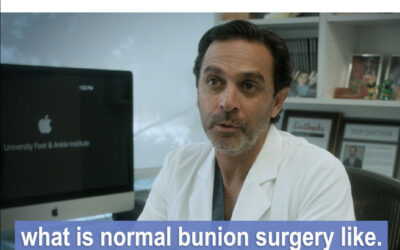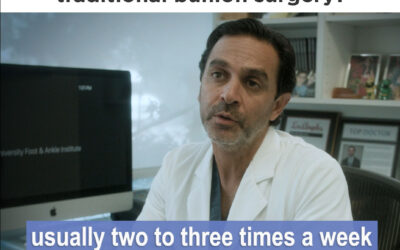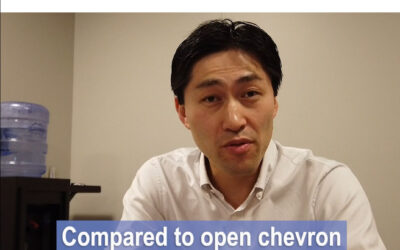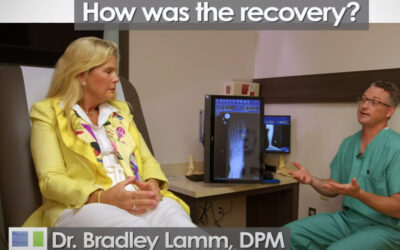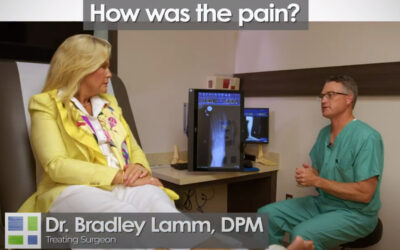
A Rapid Return
to Real Life
with Minimally Invasive
3D Surgery

A Walking
Recovery

Insurance
Coverage

A Rapid Return
to Real Life
for Minimally Invasive
3D Surgery
The miniBunion® 3D minimally-invasive bunion procedure was developed to give patients a walking recovery. The procedure focuses on aligning the toe in 3 dimensions through a tiny incision to minimize damage to the toe joint and surrounding tissue while leaving only a tiny scar.
Minimally-invasive procedures have been known to reduce pain and provide a quicker recovery. Many patients can begin walking immediately in a special postoperative shoe.

A Walking
Recovery
With the miniBunion® 3D bunion procedure, most patients are able to be on their feet immediately after surgery using a specialized postoperative shoe.
Whereas, traditional bunion surgery patients may be in a cast or bulky postoperative boot and on crutches for 8-10 weeks.
Surgeon recommendations and individual patient factors play a large role in the recovery plan.

Insurance
Coverage
miniBunion 3D Correction
What Happens in Surgery?
What About Severe Bunions?
What Do Doctors Say?
Find a Foot Doctor
During the miniBunion® 3D surgery, a small 1.5-inch incision is made on the inside of the foot. The misaligned toe is repositioned and is correctly aligned in 3 dimensions. Next, the miniBunion® 3D micro-implant is placed to help stabilize the toe in the proper 3D position while healing. The small incision is closed with stitches. Lastly, the foot is wrapped and a postoperative shoe is placed on the foot.
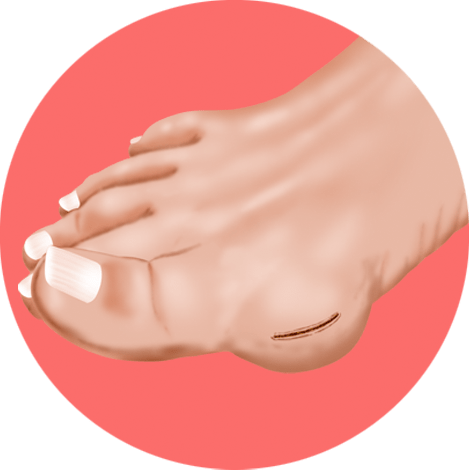 Step 1: A small incision is made on side of the foot.
Step 1: A small incision is made on side of the foot.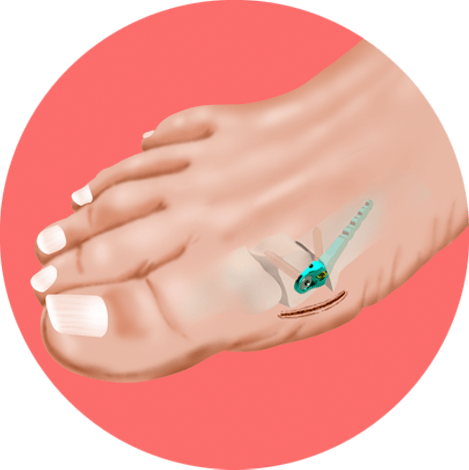 Step 2: Toe is aligned in 3 Dimensions and secured with micro-implant.
Step 2: Toe is aligned in 3 Dimensions and secured with micro-implant.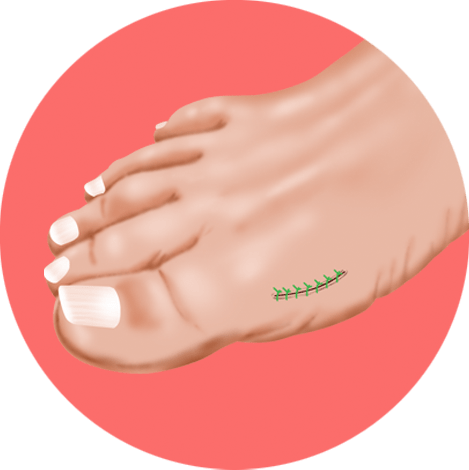 Step 3: Incision is stitched closed.
Step 3: Incision is stitched closed.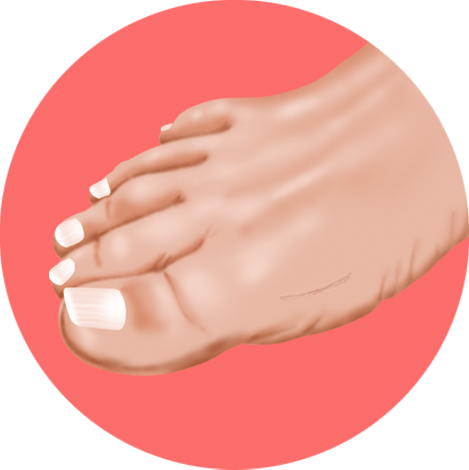 Step 4: Stitches are removed. Small scar fades away.
Step 4: Stitches are removed. Small scar fades away.The miniBunion® 3D bunion procedure is an option for the mild to moderate bunions. In some cases where the bunion is more severe, the dynaBunion® 4D Bunion System may be recommended by the surgeon.
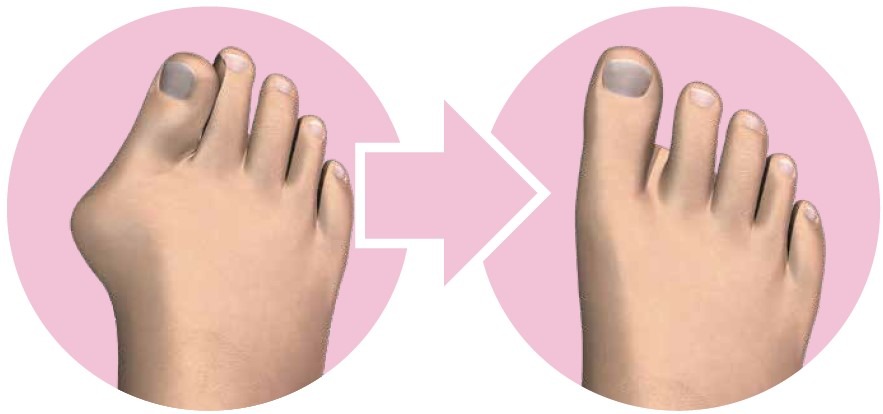
Other Surgical Options
Minimally-invasive bunion surgery may not be the solution for all patients. Some bunion patients may need a more-invasive traditional bunion surgery, such as the Chevron Procedure or Lapidus Procedure.
Chevron (or Austin Procedure)
This type of bunion surgery begins with a 3-inch incision and involves cutting through the soft tissue and repositioning the bones that are creating the bunion. The surgeon performs a V-shaped cut on the head of the long bone of the toe (the metatarsal) in order to detach the head from the bone shaft. The tip of the metatarsal is pushed closer to the second toe, allowing the big toe to be straighter and reduce the bunion. The head of the bone is reconnected to the metatarsal by using surgical hardware to help stabilize the toe.
Unlike minimally-invasive bunion procedures like the miniBunon® 3D, the Chevron procedure requires a longer recovery time of six to eight weeks and corrects the toe in one direction (from side to side). The Chevron procedure may have a higher possibility of infection due to the longer incision versus a small incision.

Lapidus Procedure
The Lapidus Procedure is a more complex surgery involving the fusion of two bones in the foot. The surgeon performs two larger cuts on the end of the bones to allow for better realignment and then secures the new position with surgical hardware (plates and screws).
Typically, the recovery process begins with 4 weeks of non-weight bearing with a boot and crutches. The patient can begin to gradually add more pressure to the foot while wearing a special boot for the next 4-6 weeks. Also, this procedure can leave a large scar on the top of the foot.
The dynaBunion® 4D Bunion system may be recommended by the surgeon.

Why minimally-invasive surgery?
When can I walk on my foot after the miniBunion procedure?
How does a foot look after miniBunion surgery?
What are the physical therapy needs for the miniBunion procedure vs. traditional bunion surgery?
What is minimally-invasive surgery?
What kind of anesthetic is used in miniBunion surgery?
How does miniBunion compare to “open” bunion procedures?
What Do Our Patients Say?
Find a Bunion Specialist


